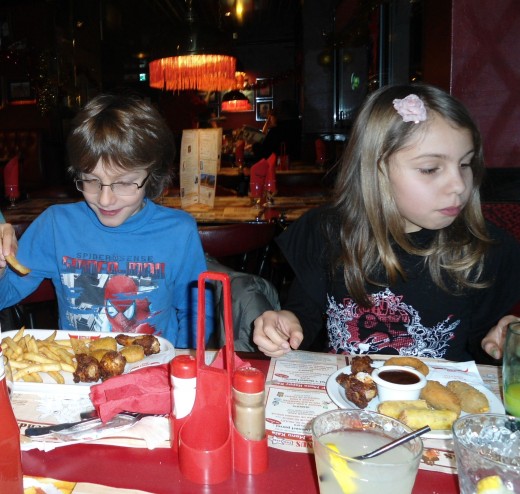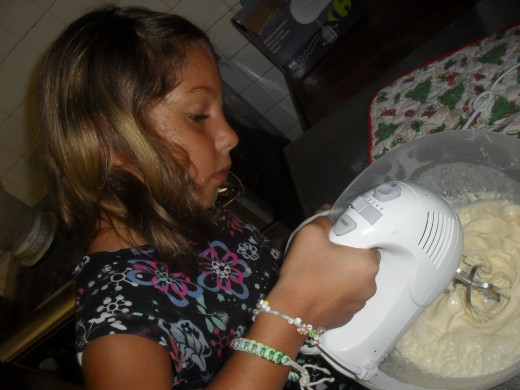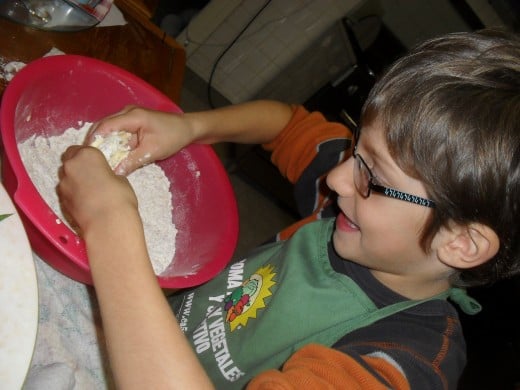Understanding Picky Eaters And How to Get a Child to Eat
A Few Of My Tips To Feed Picky Eaters
I will share with you a few of my tips to feed picky eaters, but more important than that I will try to help you to understand why your child is a picky eater. You will notice that once you understand the reasons you will be more patient with your child and you will be able to change your tactics to more effective ones.
Finally Managed To Get My Daughter Eating A Well Rounded Meal

Feeding Picky Eaters
For some parents, mealtimes can be a challenge and even worse, a struggle. Unfortunately, I was in that group of parents until recent years, when after much trial and error, I finally came to understand how to make my picky children eat a nutritious meal.
From Fish Fingers To Mussels

Understanding Child Psychology To Know Why Your Child Will Not Eat
Between 3 and 10 years of age, most children reject new flavors. This is completely normal. New things “scare” a child and that includes new foods. It is normal for a child to be concerned and refuse foods that he has never seen or tasted before.
Refusing to eat something is also a way a child uses to affirm his autonomy. Some children are more difficult than others when it comes to eating but a refusal to eat is a universal phenomenon, do not feel guilty about it. The key to avoiding despair as a parent is to understand your child’s way of thinking.
I was Desperate With My Children’s Limited Diet
I remember when my children were that age they went through a stage of eating only cereal, pasta, yogurts and fish fingers. I was desperate when seeing them eat such a limited diet. I tried adding different sauces to the pasta with no success; all they wanted was pasta with butter. I even had to always buy the same brand of fish fingers and yogurt as they would refuse any other one. I couldn’t understand why they would not eat another brand of yogurt and why they never seemed to be bored of eating the same thing.
Why Are Young Children Picky Eaters?
To understand this stage and be able to cope with it, it is important to first understand that this is the age when a child starts to have autonomy for eating and from his point of view they are reassured by eating things that they like. At 3 most children are feeding themselves and some are starting to eat snacks and even whole meals in “foreign” environments like daycare centers and schools.
Also, at this age, children are coping with an enormous amount of information: they are learning new things at school; they are meeting new people at their day care. They are learning so many things that eating what they know and like is a way to be reassured and have a “pause” from all the incoming new experiences.
Developing A Sense Of Self Involves Choosing What You Eat
By being a picky eater or refusing to eat, a child also is reaffirming his personality. Meal times are the perfect time for children to confront their parents by refusing to eat what they don’t like. In refusing to eat something new or different to their usual menu, a child is consolidating his personality, he is saying to his parents “I am an individual and I don’t have the same tastes as you.” It is frustrating for parents who have spent hours trying to cook a meal with the hope that this time their child will eat. But it is important to understand that behind this refusal to eat is a whole psychological schema being worked and solved to consolidate a child’s personality. As a parent, you are constantly telling your child what to do, when and how. To get over this stage, try compromising and letting your child choose what he wants to eat. Little by little his diet will improve when he feels that there is no pressure.
Stop Picky Eating and Expand Your Child’s Diet

Macaroni Is Macaroni
Why your child eats macaroni cheese but will not eat macaroni Bolognese?
The answer is very simple; a young child lacks the knowledge to see that a type of pasta will remain the same even if you change the topping.
The same goes for other foods, your child might love to eat tomato soup but refuse to eat tomatoes in any other way because he cannot simply acknowledge that the tomatoes are always tomatoes regardless of the way they are prepared.
For a child each new dish is completely new even if you are using the same ingredients that he is used to having in one of his favorite dishes.
Understanding Child psychology: Learn about the developmental changes that can result in picky eating
How To Make Your Child Eat A Well Rounded Meal
Some pointers to help you overcome this stage of refusal to eat and to get your child to eat proper meals are:
- Wait until your child is hungry
- Let your child cook
- Cook on the table
- Compromise when trying new foods
- Do not dramatize
Getting Your Child To Eat: The Hunger Factor
When my first child was still a toddler I visited the pediatrician in despair because I couldn’t get her to eat. Much to my surprise, my pediatrician said to me: “If she is not eating it is because she is not hungry so wait until she is hungry and she will eat. A child doesn’t starve herself like an adult would; a child will eventually eat when she feels hungry.”
It was far too simple. I admit that I was skeptical of my doctor’s advice and it took me years to understand her idea of feeding a child, but the first and most evident advice to feed a picky eater is to serve meals when your child is hungry.
To wait until your child is hungry is a very obvious point but it is often forgotten. We usually feed our children when WE think they are hungry but rarely we ask them if they ARE hungry. My children usually come back from school at 5 pm and for a long time I used to struggle with trying to feed them their dinner as soon as they came back from school because it suited me. The results were hopeless, arguments, discussions, and tears. They were obviously not hungry at that time. Eventually, I noticed that when we followed the French meal-timetable they ate much better. Instead of dining as soon as they came back from school they had a little snack -a fruit, a yogurt or a small serving of cereal- when they arrived. Two hours later, at around 7 pm we started preparing for dinner and sitting at the table at a hungry 7:30 pm. As a result, everything disappeared from the dishes!
Wait until your child is hungry
Do you wait until your child is hungry before feeding him?
A Hungry Child Will Eat Anything

Wait Until Your Child Is Hungry
It was such an easy solution that I wonder why I didn’t think about it earlier. Since then, I have noticed that the later we eat the less trouble we have at the table and the more my little ones eat. Every time we go dining out after 9 pm or we are invited for dinner (also late in France) my children eat as if they had been on a desert island for a week! On these occasions, they even eat their salads and vegetables without complaint.
Late Dinner At A Restaurant

Let Your Children Cook And They Will Eat
In France, there is a short TV cartoon that teaches young children to cook easy-to-make dishes. There are also ateliers or cooking workshops especially orientated to teach children to cook nutritionally equilibrated meals. The logic behind this approach is that if you teach children to cook, then they will also learn to eat. The ateliers –directed to children from 6 to 11- aim to make children discover how to cook using fresh fruits and vegetables, the most difficult group of foods for children. As a result, parents are pleasantly surprised that after “discovering” a fruit or vegetable and how to cook it, children come out of the atelier liking that fruit.
Let Your Children Cook, This Will Encourage Them To Eat What They Prepared


Most children love to help in the kitchen and it is fairly easy to encourage your child to eat by letting him help prepare his meals.Just let your child help according to his age and capabilities, you will immediately notice an interest in what he is going to eat.
As in the French ateliers, make the time in the kitchen a time of discovery, let them touch, smell, taste and experiment with the ingredients that you re going to use.
Letting your child cook is also a good way to help you understand which ingredients your child likes and dislikes.Maybe you are always adding onions to your food, without realizing that your child hates them and that is the reason why the whole meal is being refused.In that case (like me) just avoid the onions in your recipes or use powdered onion when you must use onions.
Since I started letting my children help in the kitchen, I have noticed that they are more adventurous in trying new dishes.Sometimes they do not eat what they prepare but most of the time they do and at least in the process they learn something about nutrition.
Why Not Invest In A Raclette Grill Machine? It Will Be A Party Everytime You Use It
Cook On The Table
This is a fantastic idea for having a meal trouble free. Whenever we cook at the table; a fondue, a raclette or crepes (I know, very French...) I can be sure that nothing will be left for the dog!
Children just love to dip their bread in the cheese, invent their own crepes with the most crazy salty or sugary toppings or heat up their cooked meats and melt their cheese in a raclette.
I think it helps that the fact that they are choosing themselves what to put on their dishes plus the fun of sharing a “family cooking” moment are good incentives to try new foods. And, after all, Who can resist dipping multiple scrumptious items into even more scrumptious melted sauces?
Compromise When Trying New Foods
Ask your child to taste new foods before trying to feed them. Yes, instead of forcing your child to eat something ask him first to try. It is natural, isn't it? Even as an adult when you don't know a food, you prefer to try a small bite before having a full serving. Well, the same logic applies to your little ones.
What I do is compromise and now I always ask my children to try a small spoon of a new dish or ingredient, before they say "NO" to eating it. The deal is that if they like it, they will eat it, but if they don’t I will not force them to eat that. Usually it works 50/50 and half of the time I win and they like the new dish and have a full plate. Other times they don’t like it and I respect that and just let them eat the rest of the meal without the “offending food”.
You might think that compromising is not a good idea but it is really just a way of introducing new flavors and dishes to your child’s menu. The good thing is that once your child knows that you are not going to force him to eat something that he doesn’t like, he will be more enthusiastic to try new foods because he knows that he if he doesn’t like them, he can refuse them without any negative consequences.
First Time Trying Grilled Sardines, A Tiny bite To Try First... Result: She Loved Them And Had The Whole Dish!

Do Not Dramatise
If your child doesn’t want to eat vegetables or she only eats fruits don’t worry too much. Most fruits have the same amount of vitamins, fibre and minerals as vegetables. Even better, the high content of sugar in most fruits with fill your child with endless energy.
What you can do is try to mix fruits with vegetables every now and again, so your child can taste a new food added to the one she already likes. For example, add a carrot to a freshly squeezed orange or add some grated carrots to grated apples for an instant starter. One of my little one’s favourite side dishes is caramelised carrots. We started having caramelised apples until one day just for fun we added a few thinly sliced carrots along with the apples. Eventually, they liked so much the caramelised carrots that we stopped adding the apples and now it is one of their favourite side dishes to accompany all sort of meats.
Do not get upset if your child refuses to eat something, give them time and try again in a few weeks.
Was This Article Helpful?
© 2012 Wendy Iturrizaga









